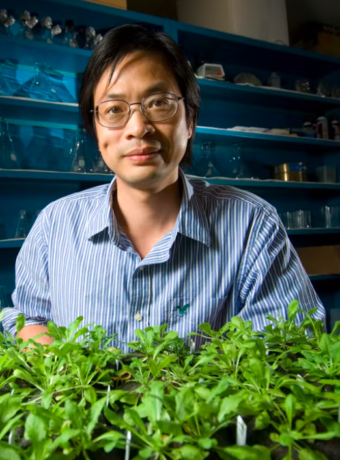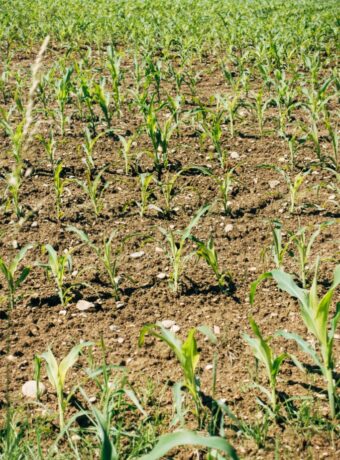This week’s ‘Global Food System Bite’ comes from Next year’s food crisis will be different from this year’s. Here’s how it could change — for the worse — in 2023.
The pandemic has had a devastating impact on economies around the world, and the war in Ukraine has only added to the chaos. As a result, the prices of many basic commodities have skyrocketed. Wheat and sunflower oil, for example, are now nearly twice as expensive as they were just a few months ago. Lemons and avocados have also become much more expensive, as the supply-chain disruptions caused by the pandemic have made it difficult to get these products from growers to consumers. In addition to driving up prices, the pandemic has also led to shortages of many staple foods. So, while the price of food may be high, there is often not enough of it to go around. This has created a lot of anxiety for people all over the world who are struggling to feed their families.
Pandemics to Political Instability
The COVID-19 pandemic has disrupted the global supply chain in a major way. This has been compounded by the war between Russia and Ukraine, both of which are major wheat exporters. This has led to food inflation that is hitting the most vulnerable especially hard, according to Mercy Corps, a humanitarian organization that distributes aid to the needy globally. In order to mitigate this problem, Mercy Corps is working with local partners to distribute food and supplies to those who need it the most. They are also working to raise awareness about the issue of food inflation and its impact on vulnerable populations. With the help of Mercy Corps and other organizations, we can hope to alleviate some of the suffering caused by this pandemic.

Last month, Ukraine and Russia reached an agreement that allows Ukraine to restart grain exports out of the Black Sea. The move has offered some relief to global markets: The UN Food and Agriculture Organization Food Price Index — which tracks a basket of commonly traded commodities — fell for the fourth consecutive month in July after hitting a record high earlier in 2022. While the agreement is a positive step, it is only a short-term fix to a long-term problem. The world’s population is projected to reach 9.1 billion by 2050, and food production will need to increase by 70% to meet demand. That means finding new ways to boost yields and reduce wastage, as well as increasing investment in agriculture. Otherwise, we could see the return of high food prices and hunger on a scale not seen since the 20th century.
“While many food prices have been decreasing in recent weeks, with some returning to prewar levels, markets will continue to be volatile and even if global prices come down, local markets may not see price adjustments for upwards of a year,” said Tjada D’Oyen McKenna, the CEO of Mercy Corps.
But, Business Insider reports that the price declines are unlikely to trickle down to the consumers immediately.
From Logistics to Supply Problems
This year’s food crisis is mostly due to a logistics disruption tied to issues in shipping Ukrainian and Russian grains out of the countries. But next year, the food supply itself could be in peril — particularly in Ukraine. The country is currently facing a perfect storm of political unrest, economic instability, and weather conditions that are decimating crops. To make matters worse, Ukraine is also struggling to contain a locust infestation that has destroyed millions of acres of farmland. As a result, the country is facing an extremely bleak food outlook for the coming year. While the rest of the world is not expected to experience such severe shortages, the situation in Ukraine highlights the vulnerabilities of our global food supply chain. With climate change and political turmoil becoming increasingly common, it is clear that we must do more to protect our food security in the years to come.

“The ongoing conflict is interfering with farmers’ ability to prepare fields, plant seeds, and protect and fertilize crops, which will likely result in even lower volumes next harvest season,” McKinsey wrote in the report about global food security amid the Ukraine war and impact from climate change.
“In the next planting season, due to the war’s disruption of Ukrainian planting and harvesting and combined with less-than-optimal inputs into Russian, Brazilian, and other growing countries’ crops, supply will likely tighten,” wrote McKinsey.
The ongoing drought in Ukraine is expected to result in a significant drop in grain production next year, according to the McKinsey report. The consultancy firm estimates that Ukraine’s wheat harvest could fall by as much as 45% in the next harvesting season. This would be a major blow to the country’s economy, as agriculture is one of its main industries. The drought has already resulted in widespread crop damage and loss of livestock, and it is feared that the situation could get worse if relief efforts are not successful. The international community has pledged to provide aid to Ukraine, but it remains to be seen whether this will be enough to offset the expected drop in grain production.
The Cost of Fertilisers
Fertilizer is an essential component of modern agriculture, and Russia is one of the world’s leading suppliers of crop nutrients. However, the ongoing conflict in Ukraine has caused severe disruptions to the country’s fertilizer exports. As a result, prices for urea, a common nitrogen fertilizer, have more than doubled from a year ago. This has led farmers around the world to use less fertilizer, which could have a long-term impact on food production. While the Russian government has taken steps to mitigate the effects of the conflict, it remains to be seen whether these measures will be enough to keep the country’s fertilizer industry afloat. In the meantime, farmers will continue to feel the pinch as they struggle to find affordable supplies of crop nutrients.
The McKinsley report states that “Fertilizer shortages and higher prices for fertilizers are also expected to reduce yields in countries that depend heavily on fertilizer imports, such as Brazil. This will likely further decrease the volume of grain on the world market.”

“Farmers we work with in Guatemala have been unable to invest in the next production cycle either because they cannot afford to buy fertilizers and other inputs derived from oil, such as plastics for padding and pipes for irrigation systems, or because they cannot find agricultural inputs in the market”
The world is facing an increasingly uncertain food supply due to the effects of climate change. In 2007-2008, the world experienced its first major food crisis in decades. The combination of severe droughts in Europe and floods in Australia led to a sharp increase in food prices, and widespread unrest followed. In 2010-2011, another food crisis struck, this time caused by droughts in Russia and the Horn of Africa. This crisis was even more severe than the first, with millions of people going hungry. Now, experts are warning that the next food crisis could be even worse. Climate change is causing more extreme weather conditions, and this is having a devastating impact on crops and livestock. With the world population continuing to grow, it is essential that we find a way to address this issue before it is too late.



